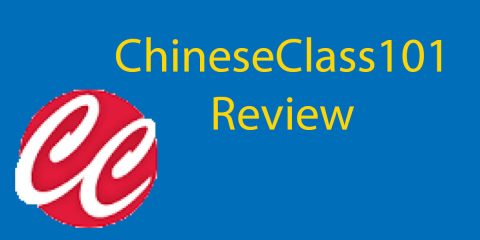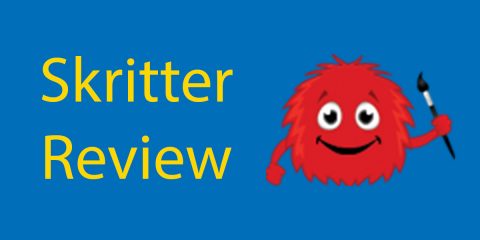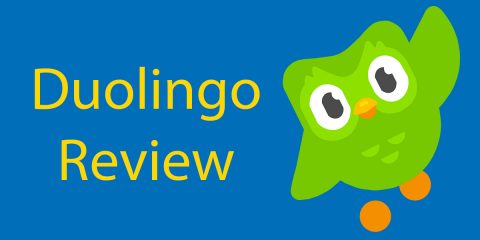Ninchanese Review // What Do We Think? (Updated 2024).
Ninchanese Review: 8/10
Ninchanese is a fun app for those wanting an all-round and fun Chinese language learning experience that is modern and uses up-to-date technology as well as proven methods of learning.
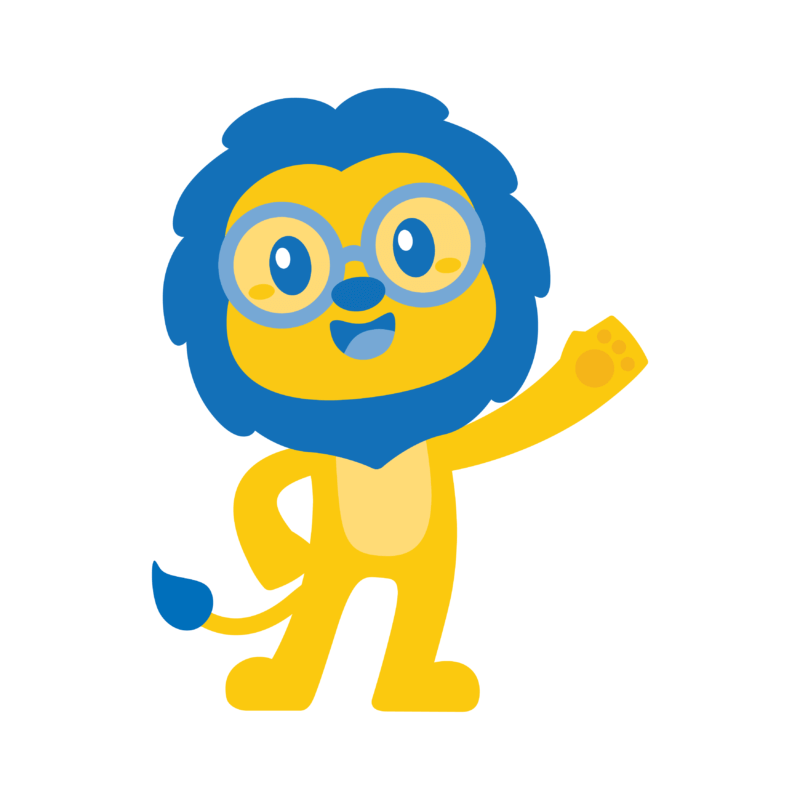
Welcome to LTL’s Ninchanese review!
We continue on our quest to review as many language apps as possible to allow you to see first-hand, what we really think.
Here at LTL, we are all ardent Mandarin students. So there are no better people to listen to than our good selves!
Ninchanese is a website and app that uses gamification and an SRS system to teach you Mandarin.
Here, we’ll be reviewing the app to see if it’s worth using as part of your Mandarin studies, and if so, how.
Alright, let’s get to it!
Ninchanese Review 1 // Key Info
Ninchanese Review 2 // Pros and Cons
Ninchanese Review 3 // Cost
Ninchanese Review 4 // How Does Ninchanese Work?
Ninchanese Review 5 // What Else Does Ninchanese Have to Offer?
Ninchanese Review 6 // Will My Chinese Improve Using Ninchanese?
Ninchanese Review 7 // Subscription (worth it?)
Ninchanese Review 8 // Conclusion; Should I Use Ninchanese?
BONUS | FAQs
Ninchanese Review // Key Info
| Name | Ninchanese |
| Website | https://ninchanese.com/ |
| Description | “Start as a beginner and get to a fluent level in Chinese, with the best of technology and gamification to learn Chinese.” (Ninchanese) |
| Languages | 1 (Mandarin) |
| Price | $10 – $96 |
Ninchanese Review // Pros & Cons
A bird’s eye view of Ninchanese with a quick list of pros and cons.
| Pros | Cons |
|---|---|
| Fun and easy-to-use user interface. | Speaking stages have computer-generated audio. |
| Built-in SRS system. | No projection of when reviews are coming. |
| Fun gamified aspects (i.e. leaderboards, story). | |
| User-created lists are available. | |
| General and specialized “worlds” of content. | |
| Grammar stages are great for practice. | |
| Useful vocabulary. |
Ninchanese Review // Cost
| Nanchinese Subscription | Cost (USD) |
|---|---|
| Monthly | $10 |
| 6 Months | $54 |
| 12 Months | $96 |
Now let’s put all of this into a bit of context around some of these points and go into more depth.
How Does Ninchanese Work?
Ninchanese is split up into 6 main “worlds” which are based on (old) HSK levels.
NOTE: The HSK levels have been undergoing change in the last few years. Read more about it here.
The HSK 5 and 6 worlds are split up into 2 worlds each (i.e. HSK 5 Part 1 and HSK 5 Part 2) since they cover so much content.
You can jump into whichever world you want right from the start (ex: HSK 4) so you don’t have to go through the previous worlds first.
There are also other worlds available, such as a world for learning radicals, the building blocks of hanzi, and a world for learning about food-related words, just to name a few of them!
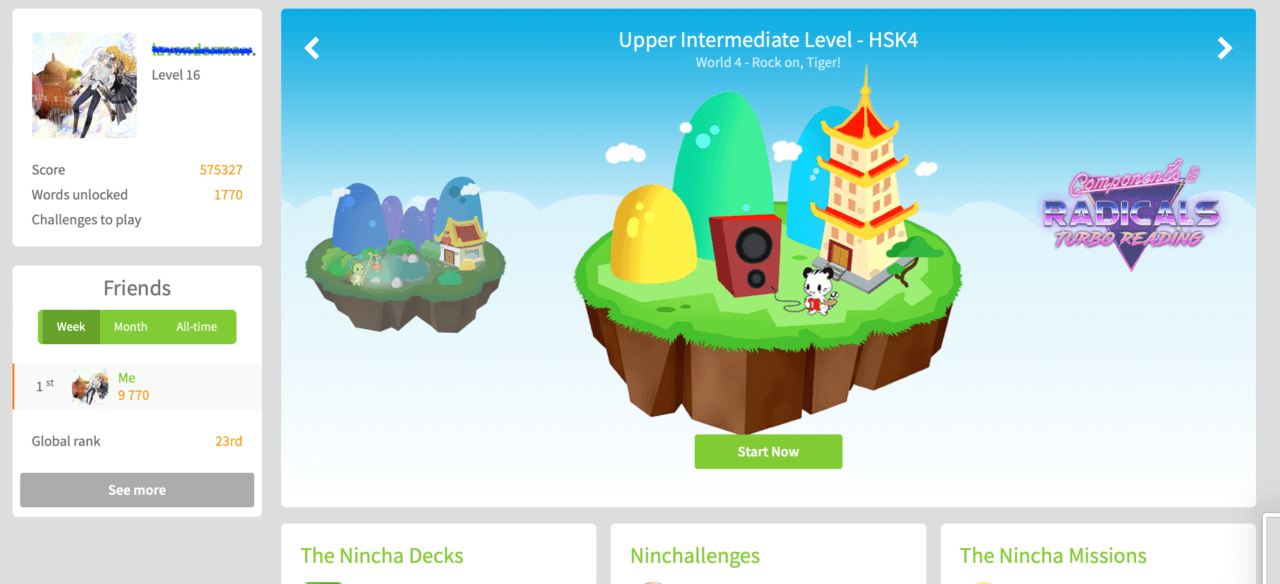
Within a world, you play different “stages” to advance, which go in the order of vocabulary, grammar, and speaking. Or, as Ninchanese calls them, “Learn some words!” (blue), “Build sentences!” (green), and “Express yourself!” (pink).
Within 1 world, there are typically around 80-100 stages in total.
So, if you complete three stages a day for example (i.e. 1 of each kind), you might finish the world in a month.
Of course, you’re free to go at whatever pace suits you best!
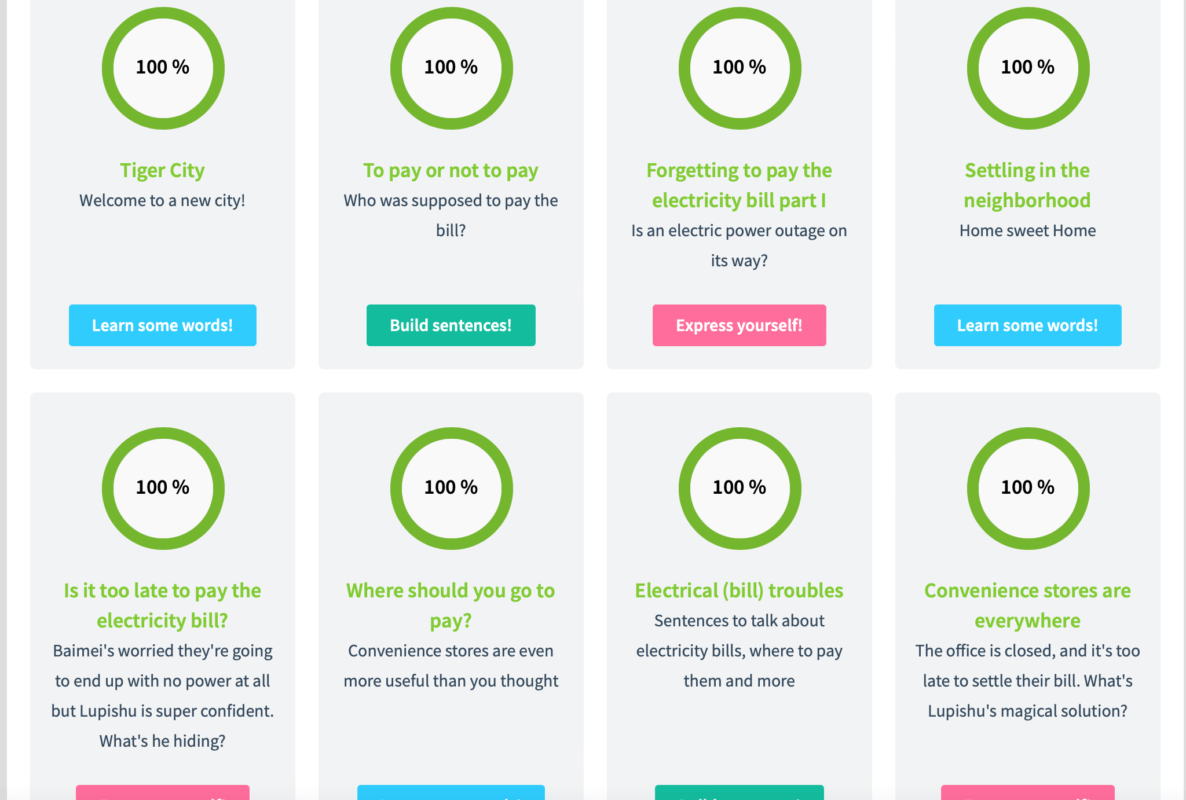
As mentioned in the pros and cons section, personally, I find that the vocabulary and grammar stages are quite useful, as they’re fun and teach you a lot.

The New HSK Exam System 😲 All Your Questions Answered
Announced in May 2020, the HSK is changing and the first exam date has been released. See all the changes here (including FULL word list).
The Vocabulary Stages
In a vocabulary stage, you’re shown a new word (including characters) and its reading and then asked to type in the pinyin or the meaning.
Once you type both correctly twice, you progress to the next word.
Each stage has 20-30 words on average (although the system shows it as double that, as it counts readings and meanings separately).
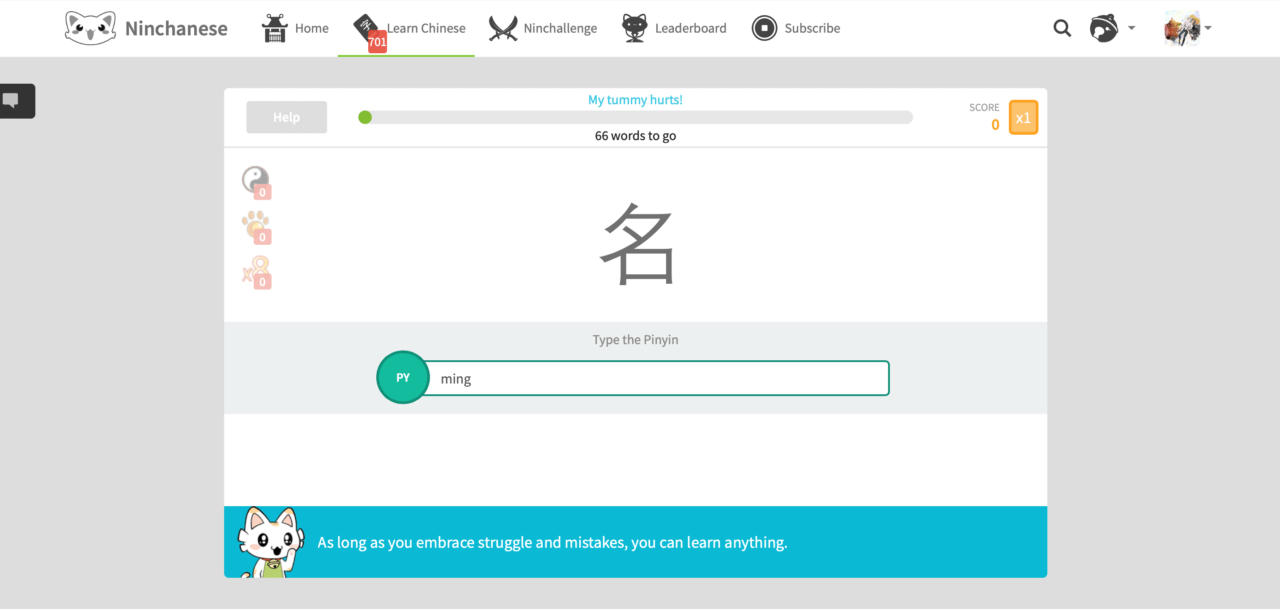
It’s worth noting that you don’t have to finish playing a stage in one sitting and can come back to it if you don’t want to do all of those words at once.
The words also come up later in your reviews, which I would recommend doing at least once a day in order to properly utilize the spaced repetition system and be able to recall what you’ve learned later.
BONUS | You can tick a box in your settings to get an email telling you how many reviews you have to do on Ninchanese every day. Use it! That way, even if you forget about Ninchanese for a day or two, the emails help to remind you to come back.
Is it useful vocabulary?
Yes, the vocab taught is fantastic, as it centres around topics like greetings at the beginning of HSK 1, and travelling during part of HSK 4.
You will absolutely see the words that you learn, which makes the vocabulary incredibly useful.
The Speaking Stages
Now, what about the speaking stages?
To be honest, the speaking stages do need some improvement. That being said, the dialogues are quite meaningful and do represent real situations generally.
In the “Express Yourself” stages, you’re given 2 options;
- Speaking
- Listening
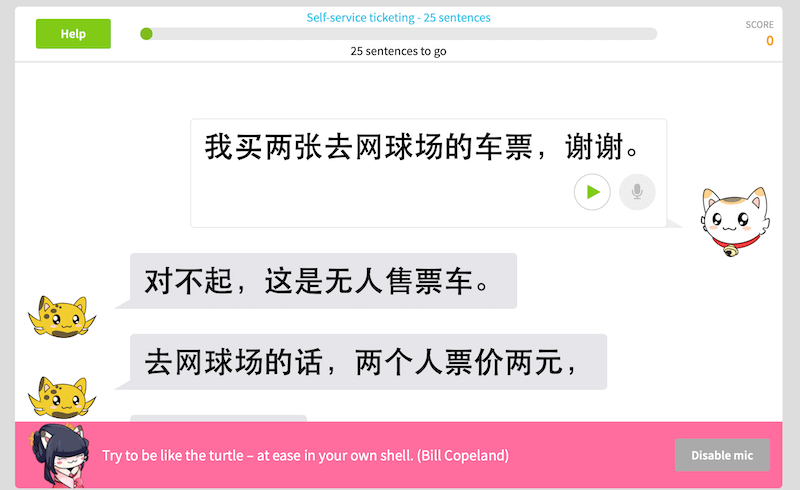
In the speaking stage, you play the audio of a sentence in a dialogue related to the vocabulary you’re learning and then repeat it.
The system will then grade you on your tones, pronunciation, and if you said the right words.
WARNING | The audio is computer-generated, so while the speaking stages are required, I wouldn’t depend on them as a source for real speaking (or really, shadowing) practice.
The Grammar Stages
Finally, there are the grammar stages.
The grammar stages are fantastic. Primarily because the lessons around each grammar point are short, sweet, and to the point.
After reading a lesson, you then practice building sentences using the grammar point and the vocabulary you learned in the last vocabulary stage.
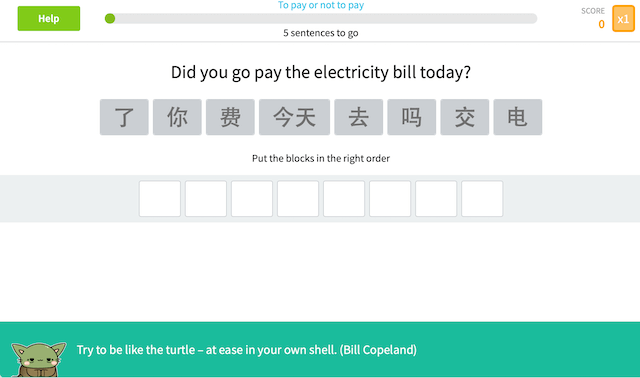
“Building” a sentence works by taking little blocks, each with a word in them, and putting them in the correct order to make a sentence.
You build 10 sentences on average, and you get a great feel for how to use the grammar point/pattern.
Those are the stages.
Besides the stages, Ninchanese has a few more things to offer!

ChineseSkill App // Rated and Reviewed
ChineseSkill (Yay or Nay) // Rated and Reviewed by LTL; 2023 Update ChineseSkill Review: 9.5/10An app offering comprehensive HSK lists, vocab sheets, flashcards, games and listening exercises all hit great depths – it’s one thats hard to flaw. It really…
Nanchinese Review // What Else Does Ninchanese Have to Offer?
Gamification
Ninchanese’s gamification is one of the best parts about it!
It’s present throughout the interface, and helps to keep your learning feeling fun and fresh!
The main places you’ll see the gamification elements are:
- At the beginning of every stage.
- In the leaderboards on the left side of the home screen.
- At the top of whichever world you’re playing in, in the progress bars.
The Story
At the beginning of each stage, before you go to speak or build sentences or learn vocabulary, you’ll see a bit of the story that Ninchanese is based around.
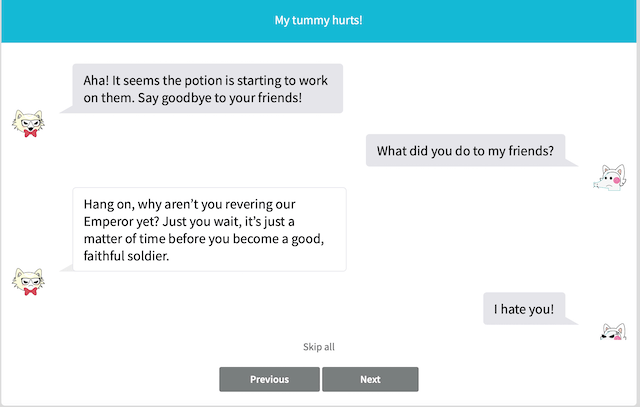
The story follows Lupishu, who starts as a baby dragon at the beginning of the story and grows bigger and changes colours as you finish each world.
In order for Lupishu to become an adult dragon, he has to learn Chinese.
He also has a mission he’s trying to complete with the help of the Nincha, or cats, who live in the country of Ninchanese (I’ll be vague so I don’t spoil the story).
The story is skippable if you don’t care for it, but I personally enjoy it! It’s a nice way to add a bit of fun into going through the different stages.
The Leaderboard
In addition to the story, the gamified elements are also present in the leaderboard (below on the left).
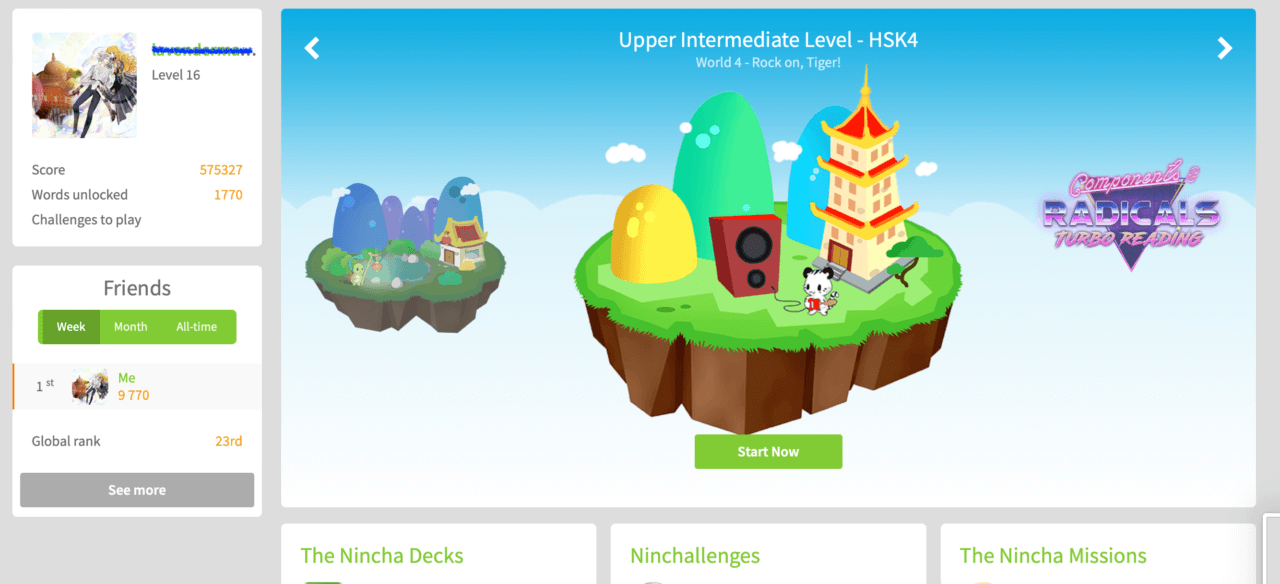
The leaderboard can be found on the left side of the screen when you’re on the home page of a world and shows your rank (generated from the points that you get after completing each stage successfully) against the rest of the people using Ninchanese.
I find that this element is very motivational for me, as I’m competitive. It helps me really try to get everything right in each stage, so that I get the maximum number of points.
You can also add people as friends on Ninchanese and have separate leaderboards for your friends and for the entire Ninchanese population.
The Progress Bars
Finally, the gamification is present in the progress bars.
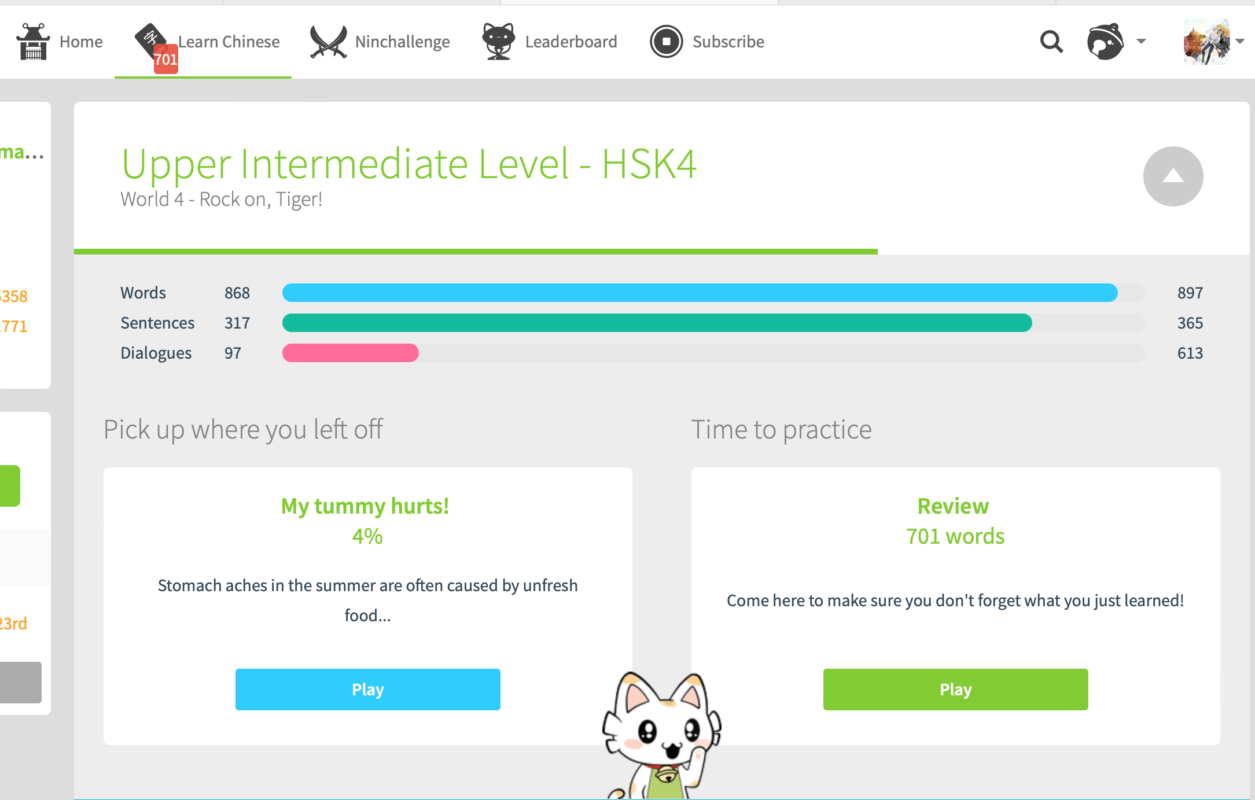
As you play your way through each world, you can see the progress bars fill up for words, sentences, and dialogues successfully played.
As you can see on mine, I don’t try at all on the dialogues, I just say something for the voice recognition to pick up and move on, since I don’t really see the point in them.
Like the leaderboards, the progress bars are nice for motivation.
They let you visualize your progress in whichever world you’re in. As the bars fill up, you work harder since you want to fill them up all the way.
To sum it up: The gamification is fantastic because it’s fun and helps keep up your motivation to come back to Ninchanese day after day.
User-Created Lists
This is a recently rolled-out feature and one I greatly appreciate!
Besides the vocabulary introduced by Ninchanese, you can also add vocabulary you encounter in your Mandarin studies to your own lists on Ninchanese.
For example – words you see in movies, TV, LTL lessons, etc.
It’s definitely a useful feature and takes Ninchanese to the next level for me since I no longer have to depend on Anki.
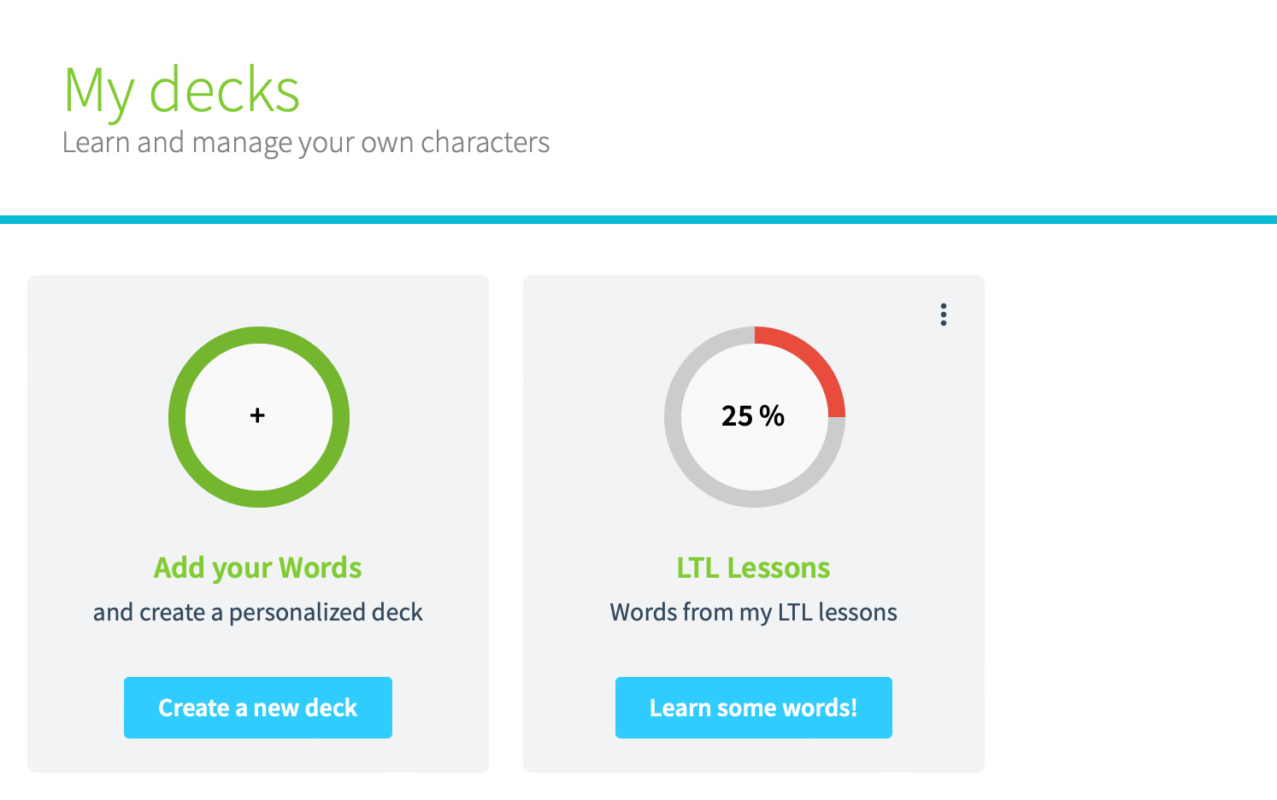
Ninchallenges
What is a Ninchallenge? Good question!
A Ninchallenge is a 1-vs-1 challenge where you’re matched with another person (either a friend or random) on Ninchanese to test your knowledge of hanzi and words you’ve learned.
It can be fun to do, although it often happens over a period of hours rather than minutes as when your opponent will take their turn and when you take yours might vary.
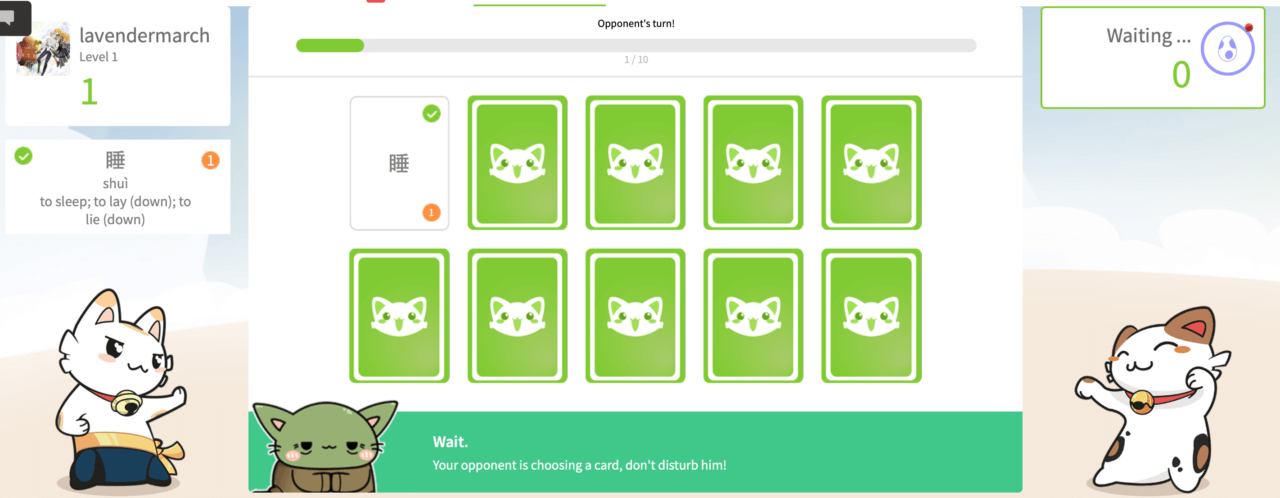
I don’t use it often, but it’s an extra element of gamification that I’d recommend to those who enjoy 1-vs-1 features.
So, as you’ve seen, Ninchanese has lots of features that separate it from other learning methods, the main one being its varied gamified elements!
However, the real question is:
Ninchanese Review // Will My Chinese Improve Using Ninchanese?

Yes, it will!
In my opinion, it’s worth using solely for the nice user interface and built-in SRS system. But the super useful vocab and grammar stages are excellent as well!
Ninchanese is a great way to review vocab by HSK level (for example, if you’re studying for an HSK exam, you can review the necessary vocabulary and grammar) as well as add your own lists.
The SRS ensures that you’ll learn the vocabulary thoroughly as long as you do your reviews every day. And the grammar stages can be replayed to review grammar points.
However, while Ninchanese can definitely help improve your Chinese, it won’t teach you everything. So, you should also use other resources to practice reading, listening, and speaking.
Now then, on to one of the most important questions…
Nanchinese Review // Subscription, worth it?
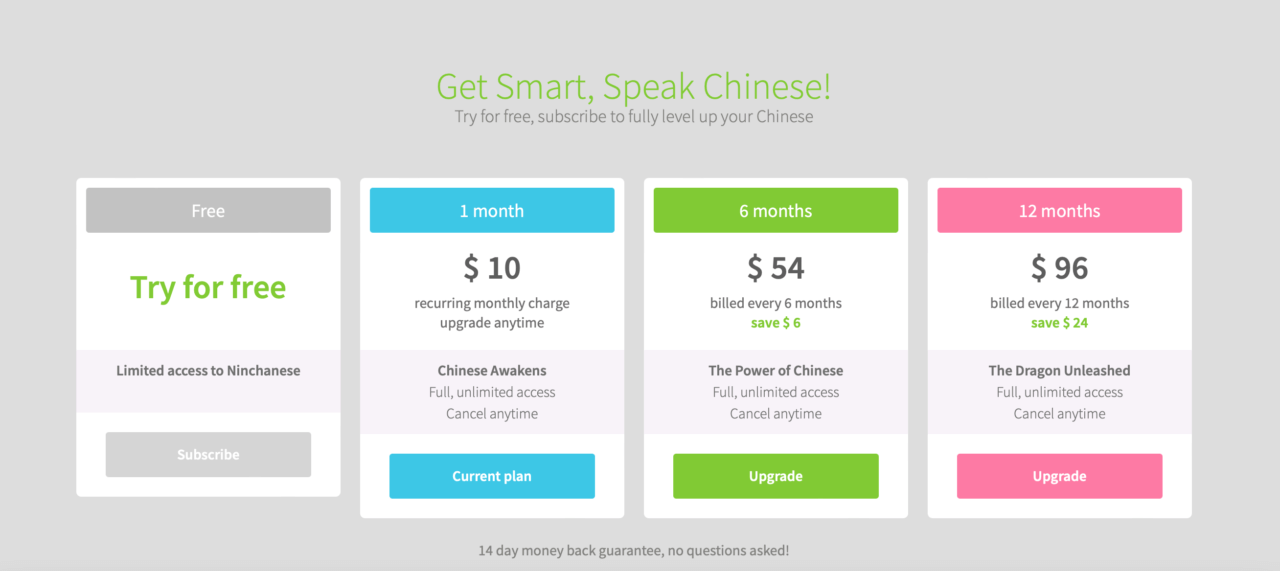
Ninchanese is freemium, meaning that you can access vocabulary stages, grammar lessons (but not sentence-building exercises), and the main HSK worlds.
However, you can’t access the speaking stages, extra worlds, or make your own lists without paying.
So, how much does it cost?
Ninchanese frequently runs promotions, but its normal price is $10 USD per month, making it quite cheap even for students or those on a tight budget.
The price for 6 months is $54, giving you a slight discount, and the price for 1 year is $96, saving you a whopping $24.
There is also a 14-day money-back guarantee.

I Studied Chinese for Years: Here’s How To Learn Mandarin
How to Learn Mandarin 🙇🏻♂️ My Guide for Beginner Learners PLUS Why It’s Not as Hard as You Think LTL’s founder and owner Andreas, toiled with Chinese for years and got nowhere fast. Years later he found the way… and…
Ninchanese Review // Conclusion: Should I Use Ninchanese?

Definitely!
If you like gamification, a gorgeous user interface, and loads of useful vocabulary (plus lots of other features), Ninchanese is a great addition to your study materials!
Plus, at such a cost-effective price, it’s hard to pass up!
However, I’d recommend using an app like Du Chinese (see LTL’s Du Chinese review here) to practice reading and perhaps Flexi Classes for speaking practice, since Ninchanese isn’t enough to make you fluent in Mandarin on its own.
I also wouldn’t mind a projection of when I’m next going to get reviews!
That said, personally, I’ve been using it since last June, and I find that it offers great value for such a low price, in terms of vocab, grammar, and pure enjoyment.
Ninchanese Rating – 8/10
Ninchanese Review // FAQs
What is Ninchanese?
Ninchanese is a gamified website and app that will teach you Chinese characters, vocabulary, and grammar.
Will Ninchanese make me fluent in Mandarin?
While it’s a great resource to self-learn vocab and grammar, whilst training your speaking and reading skills, you’ll want to complement your learning with live classes like Flexi Classes.
As a combination, this is a great way to learn Chinese.
How much does Ninchanese cost?
Ninchanese frequently runs promotions, but its normal price is $10 USD per month, making it quite cheap even for students or those on a tight budget.
The price for 6 months is $54, giving you a slight discount, and the price for 1 year is $96, saving you a whopping $24.
There is also a 14-day money back guarantee.
Is Ninchanese fun to use?
Yes, its user interface is gorgeous, much better than Anki’s, and the gamified elements help break up the learning and keep up the motivation to continue studying Chinese every day!
Want more from LTL?
Want to learn Chinese from the comfort of your own home? Then our 24/7 online Chinese lessons might be the thing for you.
We offer a 7 day free trial to all new online students where you can study Mandarin 24/7.
Come and check it out free of charge and see what you think!
If you wish to hear more from LTL Language School why not join our mailing list?



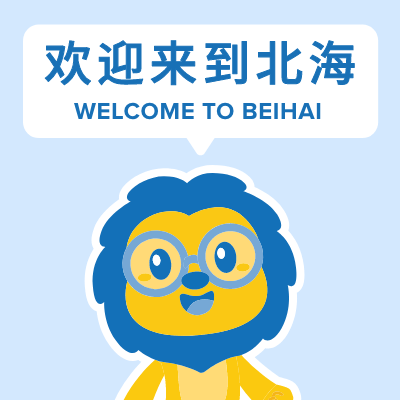


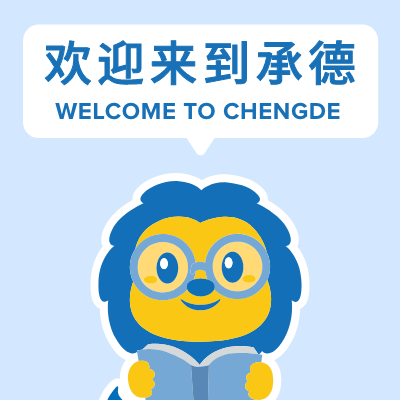


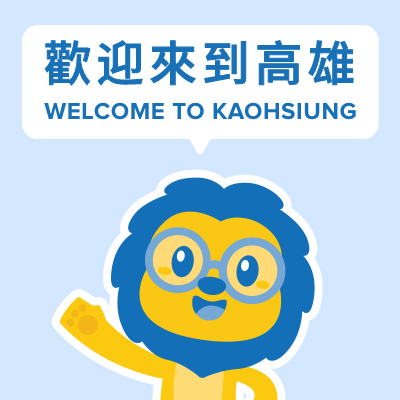
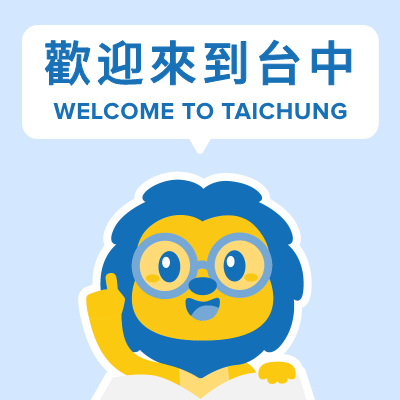



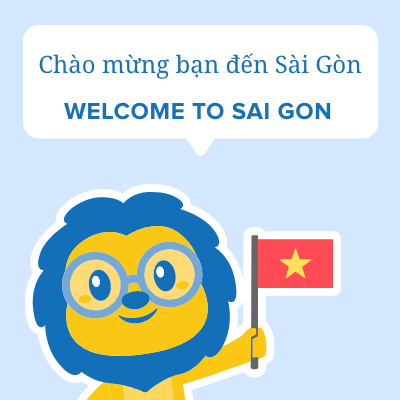

 Hi, my name is Manuel! I am from Spain and I am a Student Advisor at LTL. I’m now based at our Seoul School after living 3 years in Taipei.
Hi, my name is Manuel! I am from Spain and I am a Student Advisor at LTL. I’m now based at our Seoul School after living 3 years in Taipei. Hi, my name is Mojca! I am from Slovenia in Europe and I work as a student advisor at our Shanghai school.
Hi, my name is Mojca! I am from Slovenia in Europe and I work as a student advisor at our Shanghai school.

